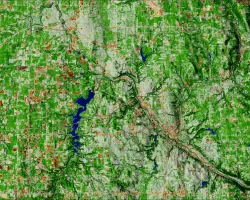Coronado Ecological Conservation (2023 Spring)
Team: Carson Schuetze (Project Lead), Tyler Guigneaux, Charles Robinette, Josie Bourne
Summary: Species monitoring is essential for mitigating the impacts of plant invasion, such as radical changes in an area’s ecosystem, degraded soil health, increased wildfire severity, landslides, and increased flooding. For this project, NASA DEVELOP partnered with the National Park Service (NPS) to investigate invasive species in disturbed lands: specifically, areas affected by off-trail travel and U.S.-Mexico border construction activities. The team assessed how construction has impacted the distribution of Lehmann’s lovegrass and Russian thistle invasives throughout Coronado National Memorial, AZ (CORO) from 1986-2022. Using data from Landsat 5 and 8, Sentinel-2, NAIP, and PlanetScope, the team computed NDVI, NDMI, MSAVI2, EVI, and Tasseled Cap Wetness, Brightness, and Greenness transformations as vegetation health indicators to input into various machine learning algorithms. To minimize noise, the team conducted Principal Component Analysis on vegetation indices and spectral bands before running k-means clustering and random forest classification algorithms. Between all datasets, the team found that the median area fully overtaken by invasive plants was 5.37% of the park’s total area in 2022. DEVELOP’s end products will help increase the NPS’s restoration efforts in disturbed areas with high concentrations of invasive plants and serve as a jumping off point for future invasive species monitoring. The NPS’s collection of ground data for 2022-2023, in conjunction with future data collection, will notably improve the accuracy of classification models, leading to more precise monitoring of invasive spread over time.


